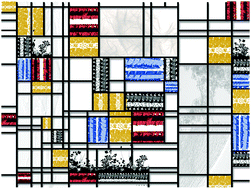An overview of the recent synthesis and functionalization methods of saponite clay
Abstract
The use of clay minerals has ancient origin and nowadays natural clays are extensively employed for a large number of applications, including in building, packaging, cosmetics, pharmaceutics and foundries. The major advantages of the use of natural clays are associated with their large availability and low price. However, when clays have a natural origin, extensive purification steps are required to remove inorganic and organic contaminants. In addition, depending on the genesis process and on the provenance site, the chemical composition of natural materials can be extremely variable. This variability represents a strong limitation for their application, especially when surface properties have to be strictly controlled. These reasons have stimulated scientists to develop synthetic materials whose structure and properties mimic those of natural layered materials. Synthetic saponite clays have largely been investigated in this scenario and, through designed synthesis procedures, it was possible to obtain solids with controlled chemical compositions, tuneable layer dimensions and enhanced physico-chemical features. The purpose of this concise review is to give an overview of the physico-chemical properties of saponite clays and of the strategies that in recent years have been adopted for their preparation and functionalization. In this respect, a number of papers are related to the modification of saponites by substitution of cations in the interlayer space by organic surfactants, ions or hybrid compounds, thus extending their application. Moreover, a few examples concerning the insertion of specific ions (i.e. transition metal species) in the tetrahedral sheets of the clay through one-pot methods have also been reported recently. These materials, prepared through less time consuming methods, are characterized by the presence of well-defined metal sites that can be effectively exploited for several applications, such as heterogeneous catalysis. In this overview, after a summary on the most common intercalation compounds based on saponite clays, attention was focused on the one-pot methods for the production of functional saponite clays.

- This article is part of the themed collections: 2020 Focus and Perspective articles and Sustainability from intercalation compounds


 Please wait while we load your content...
Please wait while we load your content...